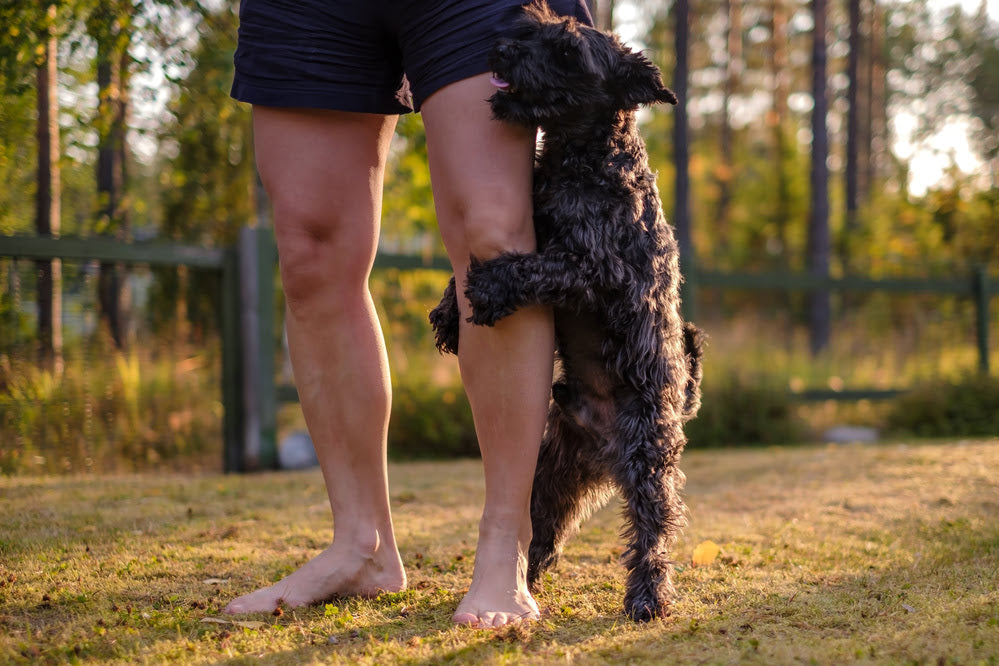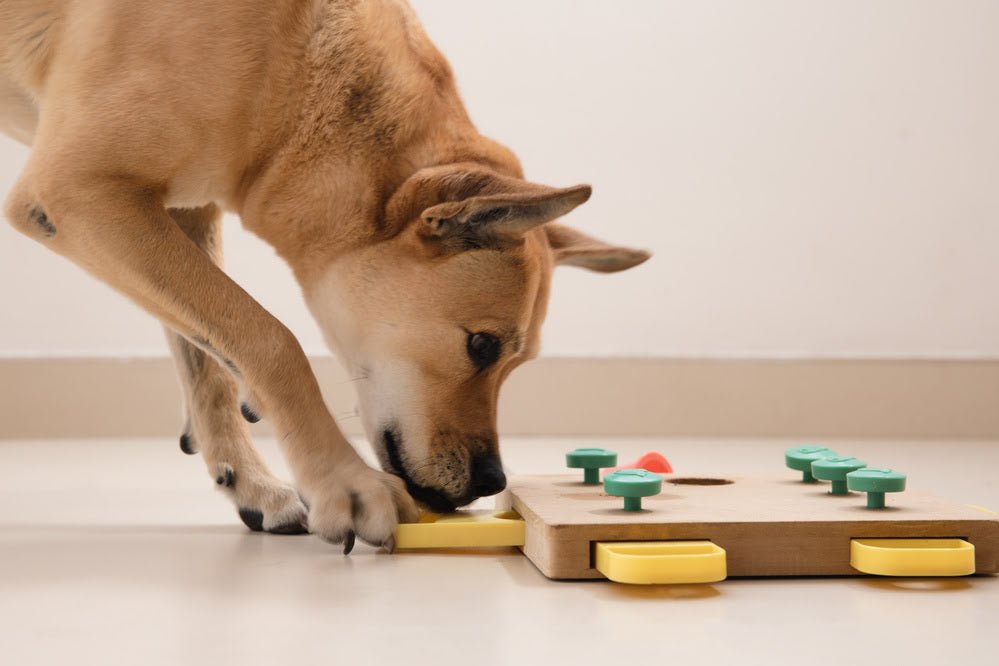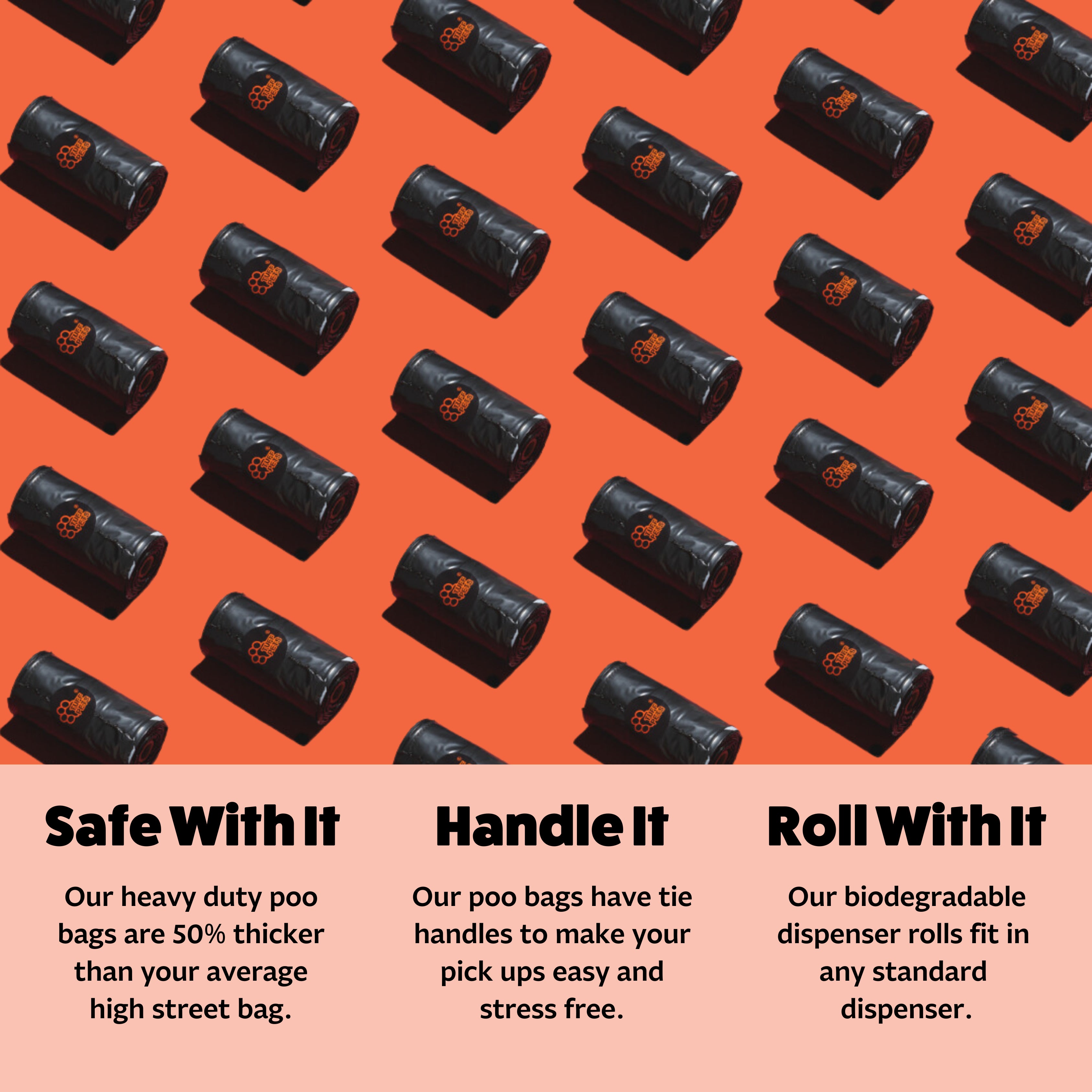Unpacking the Mystery of Dog Humping
For many dog owners, the sight of their beloved pet suddenly engaging in the act of humping can be both puzzling and embarrassing. This behaviour, although often associated with humour, is a very real topic that deserves understanding. Whether it's a male dog or female dog, humping behaviour is common among our canine companions. This post aims to demystify why dogs hump and offer practical solutions to prevent this issue.
In this comprehensive guide, we'll unpack the reasons behind the humping motion, discuss the variations between male and female dogs, and explore effective methods to stop your dog from humping. Our goal is to equip dog owners, animal behaviour enthusiasts, and pet lovers with the insights needed to address this common behaviour confidently.
The Basics of Canine Humping Behaviour

Why is My Dog Humping?
At its core, dog humping is a natural and common behaviour. Many dogs exhibit this trait as part of their interaction with the world. While it might seem like a sexually motivated action, the reasons dogs hump can be varied and complex. Understanding why your dog engages in this behaviour is crucial for addressing it effectively.
Firstly, it's important to note that dogs hump for reasons beyond sexual nature. While the sexual position might suggest otherwise, humping is not always about mating instincts. Instead, it can be linked to play behaviour, attention-seeking behaviour, or even a way to relieve stress. Recognising these motivations can help you better understand your furry friend's actions.
A Typical Day in a Dog's Life
Throughout a dog's day, various stimuli can trigger humping behaviour. For instance, the excitement of visitors arriving could spark this action. Similarly, interactions with other dogs might lead to such displays, particularly if they haven't been socialised correctly. It's essential to consider the broader context of your dog's environment when assessing why they might be humping.
Most dogs experience bouts of excess energy, and humping can be a way to channel this. It's akin to a human tapping their foot or fidgeting when restless. By providing enough exercise and mental astimulation, you can help reduce their tendency to dog hump unnecessarily.
Understanding the Differences Between Male and Female Dogs
Do Male Dogs Hump More?
Traditionally, male dogs have been more frequently observed displaying humping behaviour. This is often due to their sexual maturity and instincts. However, it's important to remember that humping is not exclusive to male dogs. Female dogs also engage in this behaviour, albeit for different reasons.
In male dogs, humping might be more pronounced during periods of hormonal changes, especially in unneutered dogs. Owners of male dogs should consider spaying or neutering as a method to decrease such sexually motivated actions. It's worth noting that even neutered dogs may continue to dog mount due to established habits or other behavioural triggers.
Why Do Female Dogs Hump?
For female dogs, humping can sometimes be linked to attention-seeking behaviour or simple playfulness. Female dogs might hump other dogs, people, or objects as part of their exploration. This behaviour is perfectly normal and can be managed with appropriate training and redirection.
Interestingly, female dogs may also hump as a form of self-soothing behaviour, particularly if they're experiencing stress or anxiety. Identifying these moments and addressing the underlying causes can help reduce the frequency of humping.
Puppies and Their Playful Nature
Puppies often display humping as a normal part of their play behaviour. For young dogs, this is a common play gesture that helps them learn about social interactions and boundaries. Puppy owners should recognise that this behaviour is typically harmless and will often diminish as the puppy matures and is socialised correctly.
However, if the humping becomes excessive or compulsive, it may indicate a need for more structured play and training. Ensuring that your puppy receives enough exercise and mental stimulation is vital for their overall development.
When Humping Indicates a Medical Issue

Could a Medical Problem Be the Cause?
While humping is often behavioural, it's essential to rule out any underlying medical issues. In some cases, dogs may hump due to discomfort or irritation caused by medical conditions. If your dog's humping habit seems unusual or excessive, consulting a veterinary behaviourist can provide clarity.
Medical problems like urinary tract infections or skin allergies could contribute to your dog's humping behaviour. These conditions can cause discomfort, leading your dog to seek relief through the humping motion. Regular check-ups with your vet are recommended to ensure your dog's health and well-being.
Behavioural Veterinary Insights
A behavioural veterinary practice can offer valuable insights into your dog's actions. They can help identify whether the humping is part of a broader behavioural issue or simply a phase. By working with an expert, you can develop a tailored plan to address your dog's needs effectively.
In some cases, humping might be linked to anxiety or obsessive-compulsive tendencies. A behavioural veterinary specialist can recommend strategies for managing these conditions, ensuring your dog remains happy and healthy.
When to Seek Professional Help
If you're concerned about your dog's humping behaviour, particularly if it seems to be affecting their quality of life, seeking professional help is advisable. A trained professional can provide guidance on addressing the behaviour and help you develop a plan to manage it effectively.
Effective Strategies to Prevent and Manage Humping
Redirection and Training
Redirecting your dog's attention away from humping is a key strategy for managing this behaviour. When you notice your dog about to hump, use a verbal cue or distraction to redirect their focus. Consistent dog training and positive reinforcement can help reduce the frequency of humping over time.
Obedience training can also play a significant role in managing humping behavior. By reinforcing commands like "sit" or "stay," you can encourage your dog to adopt more appropriate canine behavior. Consider enrolling your dog in a training class or consulting a professional trainer for additional support.
Providing Adequate Exercise and Mental Stimulation
Ensuring that your dog receives enough exercise and mental stimulation is crucial for preventing humping. Dogs with pent-up energy are more likely to engage in humping behaviour. Regular walks, playtime, and interactive toys can help keep your dog physically and mentally satisfied.
Consider introducing puzzle toys or games that challenge your dog's problem-solving skills. These activities can provide mental stimulation and reduce your dog's need to seek attention through humping.
Addressing Attention-Seeking Behaviour
Attention-seeking behaviour is a common reason why dogs hump. It's important to recognise when your dog is using humping as a way to gain your attention. In such cases, it's crucial to remain calm and avoid reinforcing the behaviour by reacting.
Instead, focus on rewarding your dog for positive behaviours and providing attention when they're calm and relaxed. This approach encourages your dog to seek attention through more appropriate actions.
The Role of Spaying and Neutering

How Spaying and Neutering Affect Humping
Spaying and neutering can significantly influence your dog's humping behaviour. Unneutered and unspayed dogs are more likely to engage in sexually driven humping. By altering your dog, you can help reduce these instincts and promote calmer behaviour.
However, it's important to recognise that spaying or neutering is not a guaranteed solution. Some dogs may continue to hump due to established habits or other behavioural triggers. Complementary training and redirection strategies can help manage these situations effectively.
The Benefits of Alteration
In addition to reducing humping, spaying and neutering offer various benefits for dogs. These procedures can decrease the risk of certain health issues and contribute to a longer, healthier life. Discuss with your veterinarian the best time to alter your dog based on their individual needs and circumstances.
Altering your dog can also contribute to reducing overpopulation, a significant concern in the pet community. By making this choice, you're helping ensure a better future for dogs everywhere.
Understanding the Limitations
While spaying and neutering can help manage humping, they're not a standalone solution. It's essential to combine these procedures with effective training and management strategies. Recognising the limitations of alteration can help set realistic expectations for addressing your dog's behaviour.
Creating a Balanced Environment for Your Dog
The Importance of Socialisation
Proper socialisation is key to preventing humping and other unwanted behaviours. Socialising your dog with other dogs, people, and environments can help them develop confidence and reduce any tendencies towards attention-seeking actions.
Introduce your dog to various situations gradually, allowing them to adapt comfortably. A well-socialised dog is less likely to resort to humping as a response to unfamiliar stimuli.
Building a Strong Bond with Your Pet
Building a strong bond with your dog is crucial for managing their behaviour. Spend quality time together through play, training, and relaxation. A positive relationship with your dog can help them feel secure and reduce their need to engage in attention-seeking behaviour.
Consider incorporating regular training sessions into your routine. Training not only strengthens your bond but also provides mental stimulation, reducing the likelihood of humping.
Recognising Signs of Stress or Anxiety
Stress and anxiety can contribute to humping behaviour in dogs. Recognising signs of stress, such as excessive panting, pacing, or restlessness, can help you address the underlying cause and provide appropriate support.
Implementing relaxation techniques, like providing a safe space or using calming aids, can help alleviate stress in your dog. Ensuring a comfortable and predictable environment is essential for their well-being.
Conclusion
Humping in dogs is a common behaviour that can be attributed to various factors. While often seen as humorous, understanding the reasons behind your dog's actions is crucial for addressing them effectively. By recognising the motivations for humping and implementing appropriate strategies, dog owners can help their furry companions lead happier and more balanced lives.
From ensuring adequate exercise and mental stimulation to considering spaying or neutering, there are numerous ways to manage humping behaviour. Remember that each dog is unique, and a tailored approach is essential for success.
For those seeking further guidance, consulting a professional trainer or veterinary behaviourist can provide valuable insights and support. By working together, you can create a harmonious environment for both you and your dog.


















Share:
Decoding Your Dog's Actions: What Their Behaviours Really Mean
Cruising with Canines: 10 Essential Tips for Stress-Free Road Trips with Your Dog